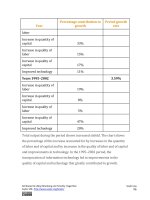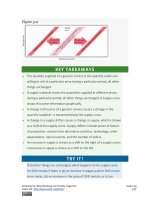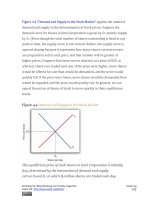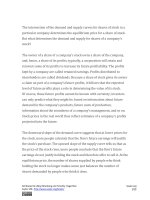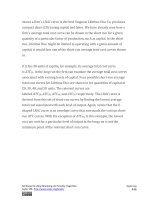Authors libby rittenberg 898
Bạn đang xem bản rút gọn của tài liệu. Xem và tải ngay bản đầy đủ của tài liệu tại đây (473.36 KB, 1 trang )
allows both countries to consume more than they are capable of
producing.
How does Seaside fare? When trade began, factors of production shifted
into boat production, in which Seaside had a comparative advantage.
Seaside tripled its production of boats—from 2,000 per year to 6,000 per
year. It sends 2,500 of those boats to Roadway, so it ends up with 3,500
boats per year. It reduces its production of trucks to 3,000 per year, but
receives 2,500 more from Roadway. That leaves it with 5,500. Seaside
emerges from the opening of trade with 1,500 more boats and 750 more
trucks than it had before trade.
As Roadway trades trucks for boats, its production remains at point B. But
it now consumes combination C; it has more of both goods than it had at A,
the solution before trade. Seaside’s production remains at point B′, but it
now consumes at point C′, where it has more trucks and more boats than it
had before trade.
Although all countries can increase their consumption through trade, not
everyone in those countries will be happy with the result. In the case of
Roadway and Seaside, for example, some boat producers in Roadway will
be displaced as cheaper boats arrive from Seaside. Some truck producers
in Seaside will be displaced as cheaper trucks arrive from Roadway. The
production possibilities model suggests that the resources displaced will
ultimately find more productive uses. They will produce trucks in
Roadway and boats in Seaside. But there will be a period of painful
transition as workers and owners of capital and natural resources move
from one activity to another. That transition will be completed when the
two countries are back on their respective production possibilities curves.
Attributed to Libby Rittenberg and Timothy Tregarthen
Saylor URL: />
Saylor.org
898
